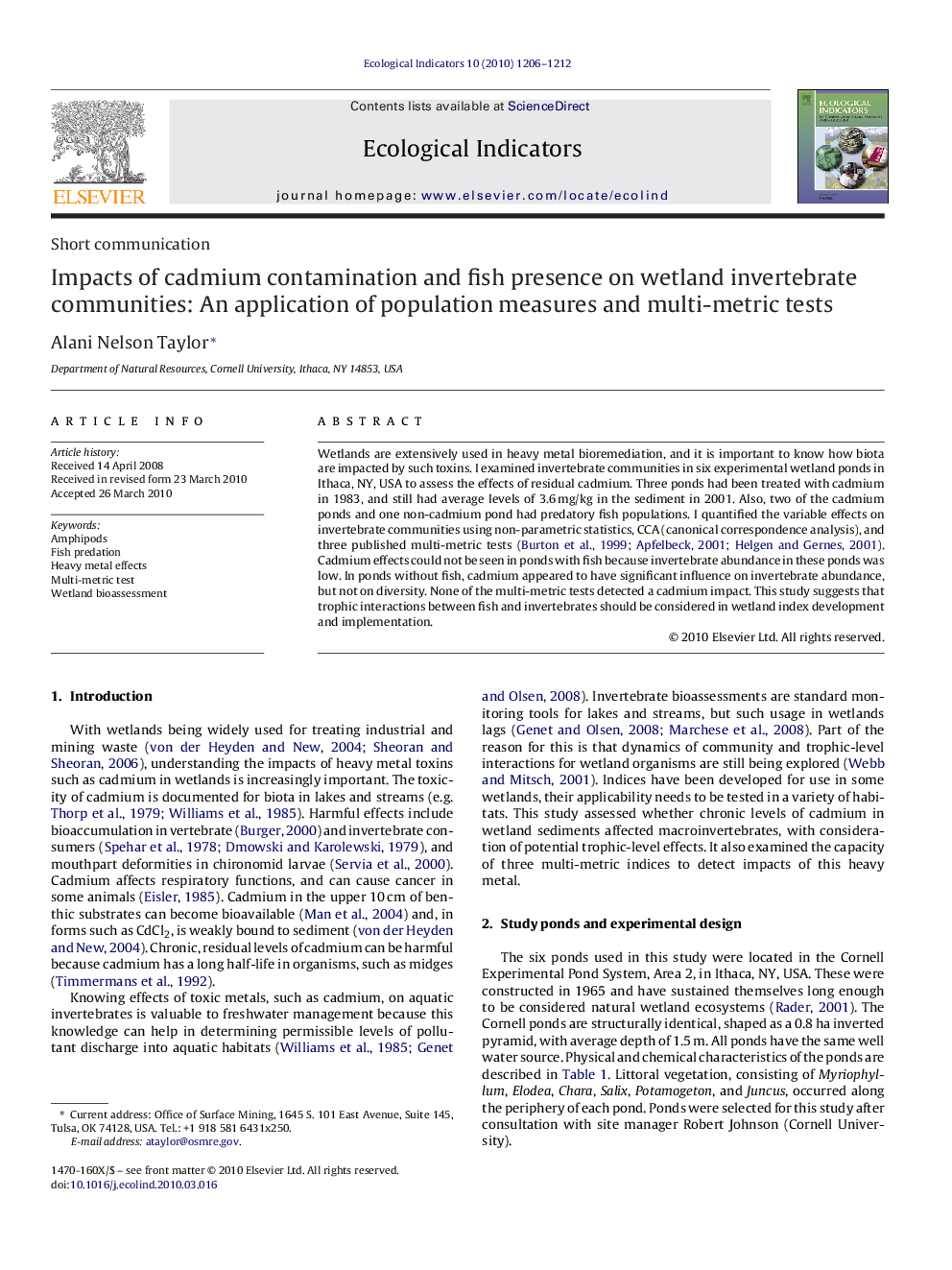| کد مقاله | کد نشریه | سال انتشار | مقاله انگلیسی | نسخه تمام متن |
|---|---|---|---|---|
| 4373866 | 1617185 | 2010 | 7 صفحه PDF | دانلود رایگان |

Wetlands are extensively used in heavy metal bioremediation, and it is important to know how biota are impacted by such toxins. I examined invertebrate communities in six experimental wetland ponds in Ithaca, NY, USA to assess the effects of residual cadmium. Three ponds had been treated with cadmium in 1983, and still had average levels of 3.6 mg/kg in the sediment in 2001. Also, two of the cadmium ponds and one non-cadmium pond had predatory fish populations. I quantified the variable effects on invertebrate communities using non-parametric statistics, CCA (canonical correspondence analysis), and three published multi-metric tests (Burton et al., 1999, Apfelbeck, 2001 and Helgen and Gernes, 2001). Cadmium effects could not be seen in ponds with fish because invertebrate abundance in these ponds was low. In ponds without fish, cadmium appeared to have significant influence on invertebrate abundance, but not on diversity. None of the multi-metric tests detected a cadmium impact. This study suggests that trophic interactions between fish and invertebrates should be considered in wetland index development and implementation.
Journal: Ecological Indicators - Volume 10, Issue 6, November 2010, Pages 1206–1212